Please nominate comments by replying with “comment of the week” or “COTW” so I can easily search for them. Thank you.
This week’s most notable comment has stood the test of time.
When Shawn Granton mentioned a BikePortland comment during our interview last week, I was amazed that he remembered something written 17 years ago. Yes, Shawn never forgot that time in 2008 when something as innocuous as a post about his annual Palm Tree Ride elicited a critical comment.
Back then, Portlander Jim Labbe (an urban conservationist who’s worked with Bird Alliance of Oregon (formerly Portland Audubon) wasn’t thrilled to see palm trees portrayed in such a positive light because, “They distort our sense of place in the Pacific Northwest, are a surrender to climate change, and are really shotty at reducing stormwater run-off!”
When Jim tapped back into the comment section over the weekend, he sang a different tune. Below is our latest Comment of the Week:
When Shawn’s now classic Palm Tree ride first started, I may have been among the poo-pooers, although not because of any association with the great State California, the source of many a great Portland transplant. My particular gripe was that palms are a poor substitute to most botanical trees in terms managing urban stormwater run-off and certainly less beneficial than historic/indigenous/endemic tree species in supporting the region’s historic/indigenous/endemic biodiversity. So while I think cities would be served by better adapting themselves to their regional environments, they are also international multi-cultural hubs and Shawn has made a strong case that Portland’s palms should be part of that unique Portland esthetic and deserve a little (more) love.
I picked this comment because I love how Jim’s original comment in 2008 stayed with Shawn all these years — and that the two had another exchange 17 years later to resolve the friction. I also appreciate how Jim owned up to his previous comment and shared not just how he changed, but why. This back-and-forth says so much about Portland, our bike scene, and about the BikePortland comment section. Thanks Shawn and Jim!
Remember to reply with “comment of the week” or “COTW” to nominate a comment.


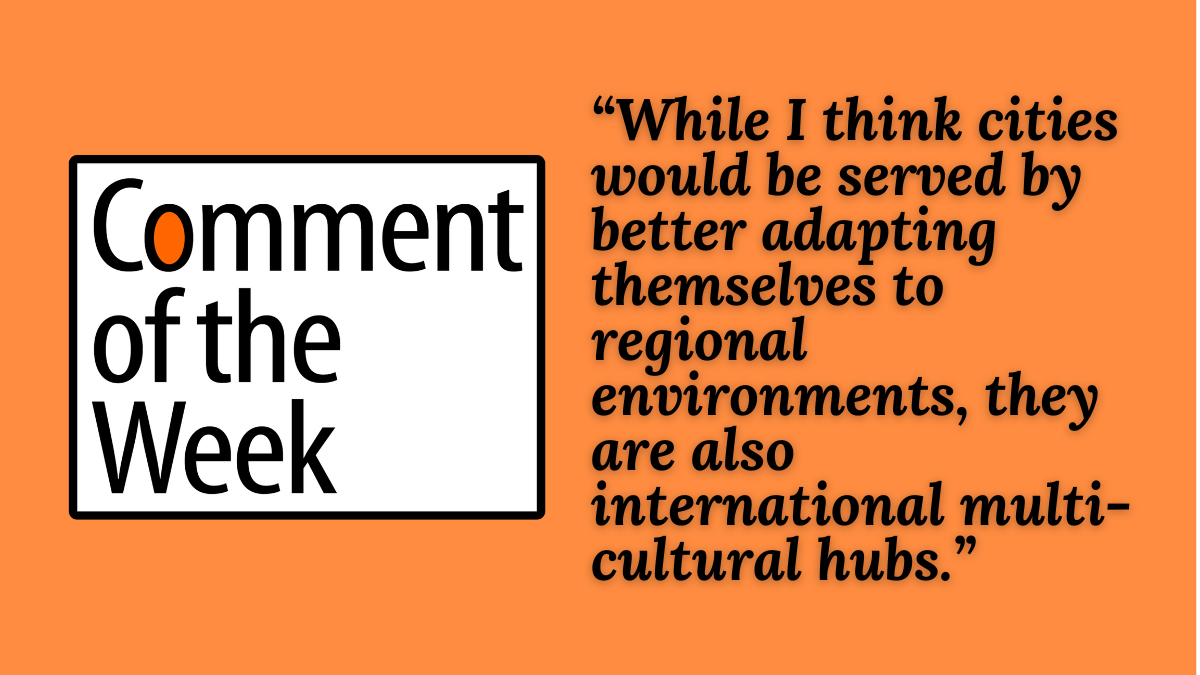
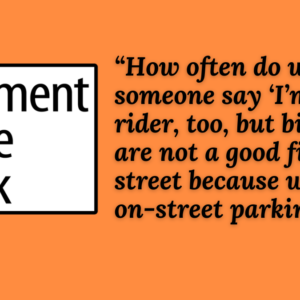
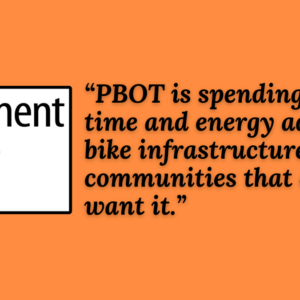
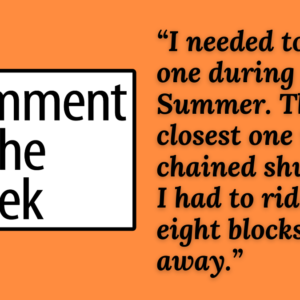
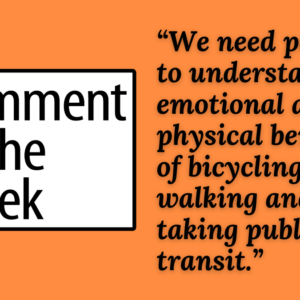
Thanks for reading.
BikePortland has served this community with independent community journalism since 2005. We rely on subscriptions from readers like you to survive. Your financial support is vital in keeping this valuable resource alive and well.
Please subscribe today to strengthen and expand our work.
I thought the whole palm tree episode was a sarcastic joke from way back when, that when Douglas Fir trees are trimmed to the point that only their upper few branches remain (which is really bad for the trees), they were termed “Douglas Palm Trees”. Are there any actual tropical palm trees growing in Portland?
Tropical? Maybe a handful. Temperate growing palms? Yes, plenty. Trachycarpus fortunei, aka Chinese windmill palm, grows in regions where snow is regular, and that’s what we generally see here. And my ride over the past 20 years has toured many of the specimens. If you came along at least once, you’d know the correct answer to your question. 😉
You can see actual photos of actual palm trees in actual Portland here:
https://www.flickr.com/photos/urbanadventureleaguepdx/albums/72157639993172574
And yes, there are some on the east side of Portland, though maybe not as many as west of 205. Here’s an example of one at NE 111th in Parkrose Heights from a few years ago, though I believe both the tree and house are now gone:
https://www.flickr.com/photos/urbanadventureleaguepdx/49982006768/in/album-72157639993172574
Amazing!
Obviously I didn’t pay attention to these particular flora when I lived in Portland for 17 years, as I was distracted by all the plethora of other dubious invasive non-native species out there such as English Ivy, Scotch Broom, various fruit trees (apple, pear, peach, kiwi, etc), as well as a few banana trees. I took the train many times but apparently never bothered to appreciate the plants just outside of the station itself. Thanks for the photo links!
It’s not only amazing what you do notice, but what you don’t notice. Many people have come on my Palm Tree Ride and expected either nothing or maybe six trees, tops. The key thing is once you notice something in the urban environment, you’ll start seeing it everywhere. It will be hard to not notice.
I bike by this house every day with some.
That is a good one!
Every gardener knows best. However after a couple of years of mild winters, Portland saw an arrival of Washingtonia robusta (fan palms). A subsequent harsh winter delivered a wholesale slaughter of those temperate climate palms and gardeners, who had been planting an ill fitting landscape grieved
Yeah, I remember that. Sean Hogan of Cistus Nursery on Sauvie Island (a local palm/exotic expert) advised many of those folks about the risk of planting those palms, as one hard winter would take them out. And that hard winter happened and killed those palms off. Chinese windmill palms are hardy and can tolerate snow, so those were not as affected.
Palms do suck though
Why, though?
For the opportunities missed. Palm trees appropriate land for decades. That real estate is not providing habitat during a global extinction crisis and not providing cooling shade as the planet warms. Every gardener knows best, but planting solely for the ornamentation might be considered a foppish surficial affectation that ignores the potential for environmental services a tree can provide. They might as well be cleverly fashioned plastic
Palms are still somewhat rare. I know some folks who bought a house with a small windmill palm in place and so far it survives, not their only tree-ish thing and not the largest. If we’re going to make decisions on strictly ecological terms then perhaps motorcars, free ranging cats and refrigerators might be bigger issues.
Coyotes are taking care of the cats… maybe we can pay them to dispose of our refrigerators while they’re there.
I get what you’re saying, but I get more irritated by lawns and acres of pavement found in the urban environment, vs. an exotic that doesn’t take up much space, nor is planted in big stands–most palms I see are one, two, maybe three in a yard with other plants. And as far as I know, they have not crossed over into “invasive species” territory so they aren’t in the same category as English Ivy (talk about doing nothing for erosion) and Himalayan Blackberry (but the berries!)
And thank you for providing me with the phrase “foppish surficial affectation”. I’ll make sure I use it on this, and future Palm Tree Rides. (I’ll let you keep “every gardener knows best” since you seem to be fond of it.)
What Granpa said pretty nicely. Besides making some people feel good when they look at them, remind them of the home they left to live here, they do *nothing* to help the bugs and birds and animals that live here. I don’t really have a big beef with palms, there’s not enough here for me to get tooo worked up about, but if I bought a house and there was a palm, that thing would come down so fast. There are beautiful native trees that will provide better shade, handle our climate better and offer birds and pollinators something while they’re at it.
When I’m somewhere hot and sunny, sub-tropical to tropical, yeah, a palm is kinda neat. It makes sense.
Thank you for clarifying your initial flippant statement, even though you let Gramps do the heavy lifting here.
“Besides…remind(ing) them of the home they left to live here..”
I see what you did here, using coded language to refer to Portland’s popular bogeyman. While this may sound true, unless we go and ask everyone who has a palm in their yard where they moved from, that statement just conjecture. But I get it, I’ve bashed California before too.
And yes, palms are not going to be as good as native plants. But let me do a thought experiment here: Let’s say I planted an Eastern White Oak in front of my house because it is the state tree of Connecticut, my home state. Let’s say I sell this house to you. Would that White Oak come down “so fast”? Would it even register that it isn’t a native tree? And if it did, would you justify keeping it because of its environmental benefits despite not being native and/or because “it doesn’t look out of place”?
My Palm Tree Ride brings out a lot of feelings and preconceived notions on place. One of the big things I talk about on the ride is how the urban fabric of Portland is contrived, and things “feel right” because we are conditioned to. Besides the ubiquitous Douglas-fir and a few other conifers, most of the deciduous trees we see in the Rose City come from elsewhere, generally east of the Rockies, and most likely east of the Mississippi. Yet we don’t bat an eye when we see another beech tree, yet a palm tree, because it looks “out of place” gets our attention and may even raise our ire. If we were really concerned about what would be best for this place, it would be native trees. Yet we rarely see people plant Oregon White Oaks, Bigleaf Maples, Red Alders, or Pacific Madrones, our only native broadleaf evergreen.
So while Palm Trees may not be the best thing for Portland, I still appreciate them. I will admit that I find them neat, I wouldn’t be doing this ride for 20 years if I didn’t! And riding around town sure beats pumping more CO2 into the air to see palm trees in a tropical location.
I look forward to joining one of your rides. I am always botanizing when I ride and geeking out with another plantsman would be fun. FWIW, Oregon has another broadleaf evergreen, Umbellularia californica the California bay, or myrtlewood. Also, there are multitudes on non native trees that are generous with environmental benefits
We do usually hit up a few myrtlewood trees on the ride. It is native to SW Oregon, but not here.
Oh, and the Chrisolepis chrisophylla, chinkapin oak
You might be in the running for the worst comment of the year.
mcl pedaler
No objection to palms. I’m a tree hugger and and a lifetime cyclist. But too many palms, especially of certain kinds would pose a problem in this tree-loving region, especially considering Forest Park:
https://fire.lacounty.gov/wp-content/uploads/2022/02/PalmsWildfire.pdf
Thankfully we’d probably never reach the numbers in palms where there would be this risk.